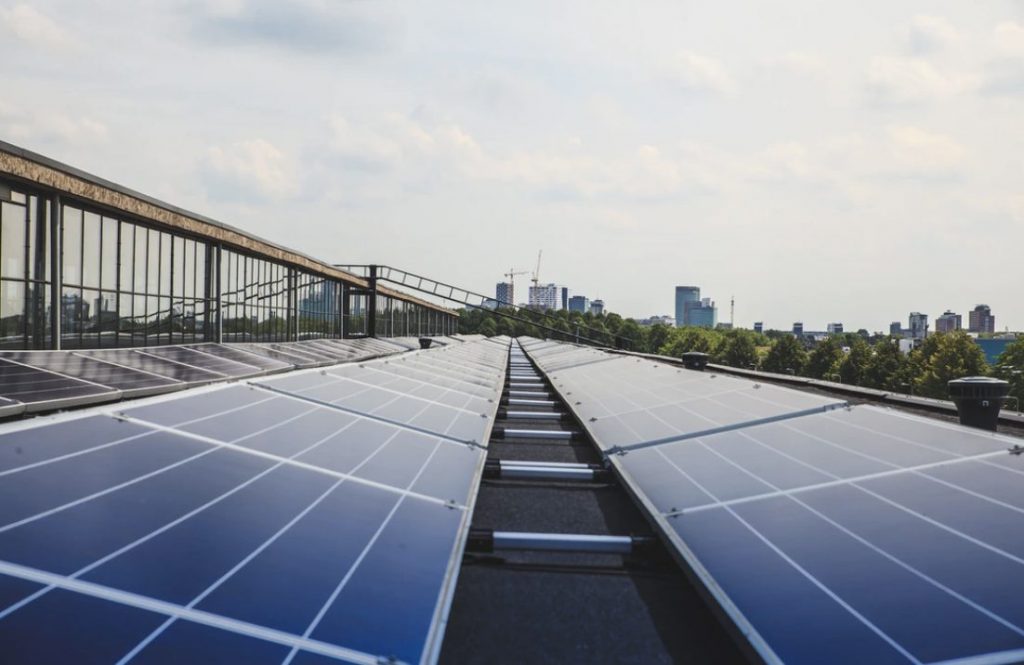By Jude Jussim
The capacity for solar power generation in the US has grown tremendously, from 314 megawatts (MW) in 1990 to 47.8 million MW in 2020–over 3% of US electricity. Contributing to this growth has been a dramatic decline in the cost of solar panels, with further reductions likely.
Despite this, the need for daylight limits commercial and utility-scale use of solar power. Even during the day, utilities need some help to get through power “blips” such as passing clouds. Natural gas has been a short-term solution. The long-term answer—and the key to further development of solar as a commercial power resource—is cost-effective energy storage.
Most solar power (96%) is generated using photovoltaic (PV) systems (“solar panels”). Power can be stored mechanically (pumped storage), chemically (batteries or hydrogen), or thermally (heated liquids or molten salt). Some storage approaches can handle short power blips, while others are useful for riding out bad weather, keeping appliances going into the evening, and even compensating for seasonal drops in solar gain.
Most energy storage methods that work for solar power also apply to storing wind energy.
Let’s Talk Battery Storage
Lithium-ion batteries are of limited use when it comes to storing energy in grid-level systems. They are excellent for handling brief dips in grid power, as on partly cloudy days, but most battery-based solutions are only useful for one to four hours.
Batteries that store power for 12 hours or more are not cost-effective, and they only have a fixed number of recharging cycles. High operating temperatures, or freezing temperatures during charging, each create a risk of overheating. And of course, lithium battery production has a high carbon footprint, creating risks to human health and potential ecological toxicity.
Vehicular lithium-ion batteries may potentially serve double-duty as a form of small-grid storage (V2G) when not on
the road. Only those batteries designed for two-way power flow (e.g., the new Ford Lightning) are suitable.
There are other battery solutions in early development. Recent research shows that combining the concrete in new buildings, sidewalks, and other structures with carbon fibers, and iron and nickel coated mesh electrodes, allows that concrete to store power. While concrete has a low capacity for energy storage, the sheer volume of concrete makes up for that. A building-as-battery could be recharged with integrated solar panels.
Hydrogen Storage: An Emerging Solution
Hydrogen generation with fuel cells can provide a solution for long-term storage of solar energy at grid scale. To achieve this, surplus solar power is used to split water atoms (electrolysis), producing hydrogen and oxygen. The hydrogen is stored in tanks, and converted back to electricity using fuel cells when power demands call for it. This system has a smaller carbon footprint than lithium-ion batteries and none of the toxicity risk. Fuel cells can be recycled or refurbished, and the platinum used in the electrolytic process can be recovered.
Researchers at the National Renewable Energy Laboratory (NREL) report that hydrogen technology has the greatest potential for seasonal energy storage, particularly as the cost of generating “green” hydrogen falls, as is expected.
Pumped Hydropower Storage: An Uphill Struggle
Pumped hydropower storage is a mature technology, but is less than ideal for solar energy storage. It requires building hilltop reservoirs to hold water pumped upwards from a river or lake using excess solar power. When needed, the water is released to generate hydropower. Creating pumped hydropower capacity is expensive and there may be regulatory barriers to reservoir and hydro plant construction.
Thermal Storage
Thermal storage is used in tower format concentrating solar power plants (CSP). These plants, which are limited to the southwest and Florida, use mirrors to focus energy on a single receiver, heating a liquid, which in turn boils water, creating steam for power generation. To meet demands when solar power cannot be generated, the liquid—usually water or molten salt—is stored in an insulated tank, and used to produce steam when needed.

With storage so critical for the large-scale growth of renewable energy, many states are now mandating that utilities develop power storage capacity, and major energy companies (e.g. Shell) are heeding the call. Watch for solar power storage to take off in the immediate future.
Interested in learning more about a Green Career? Check out our upcoming July Green Careers event.Jude Jussim is Principal, Jussim Communications.
